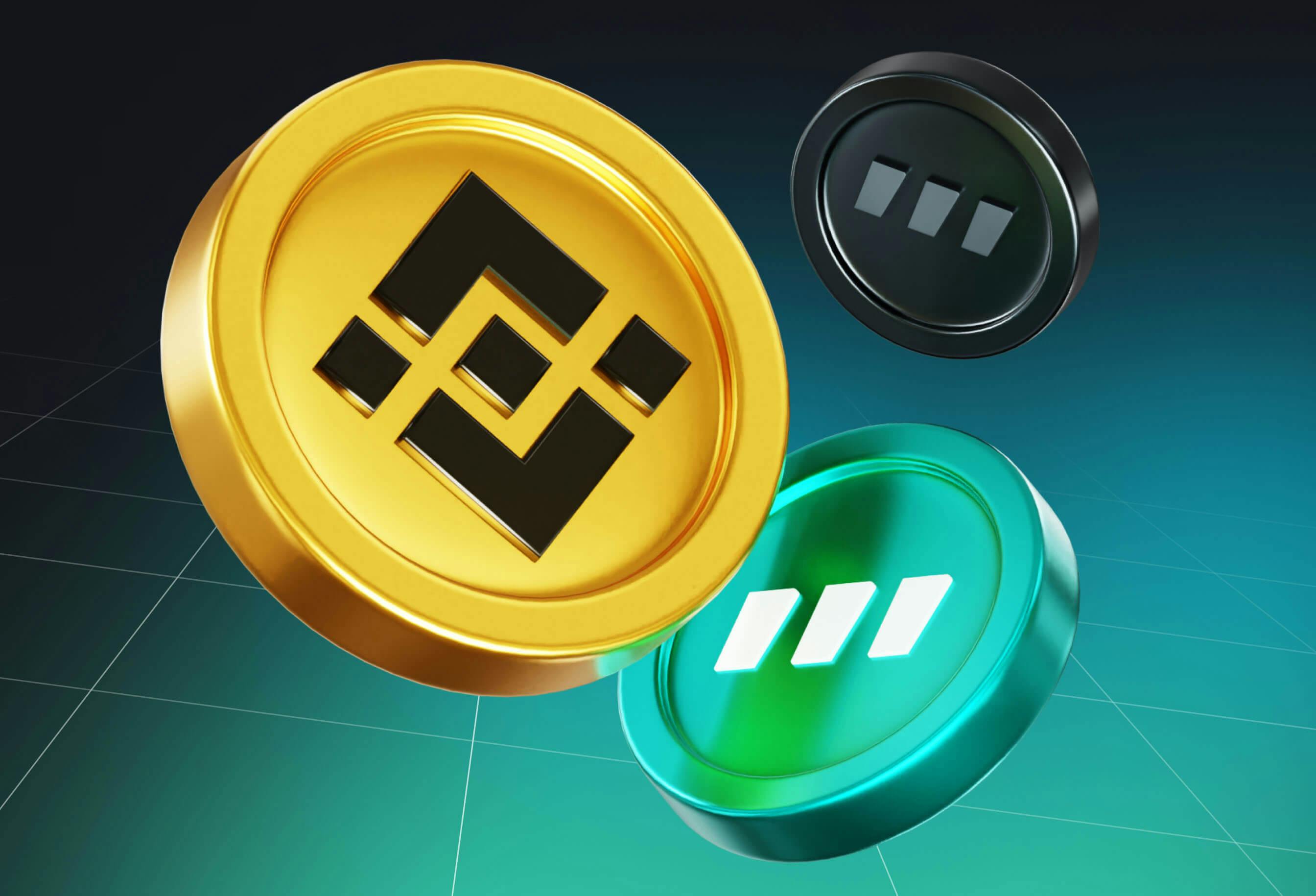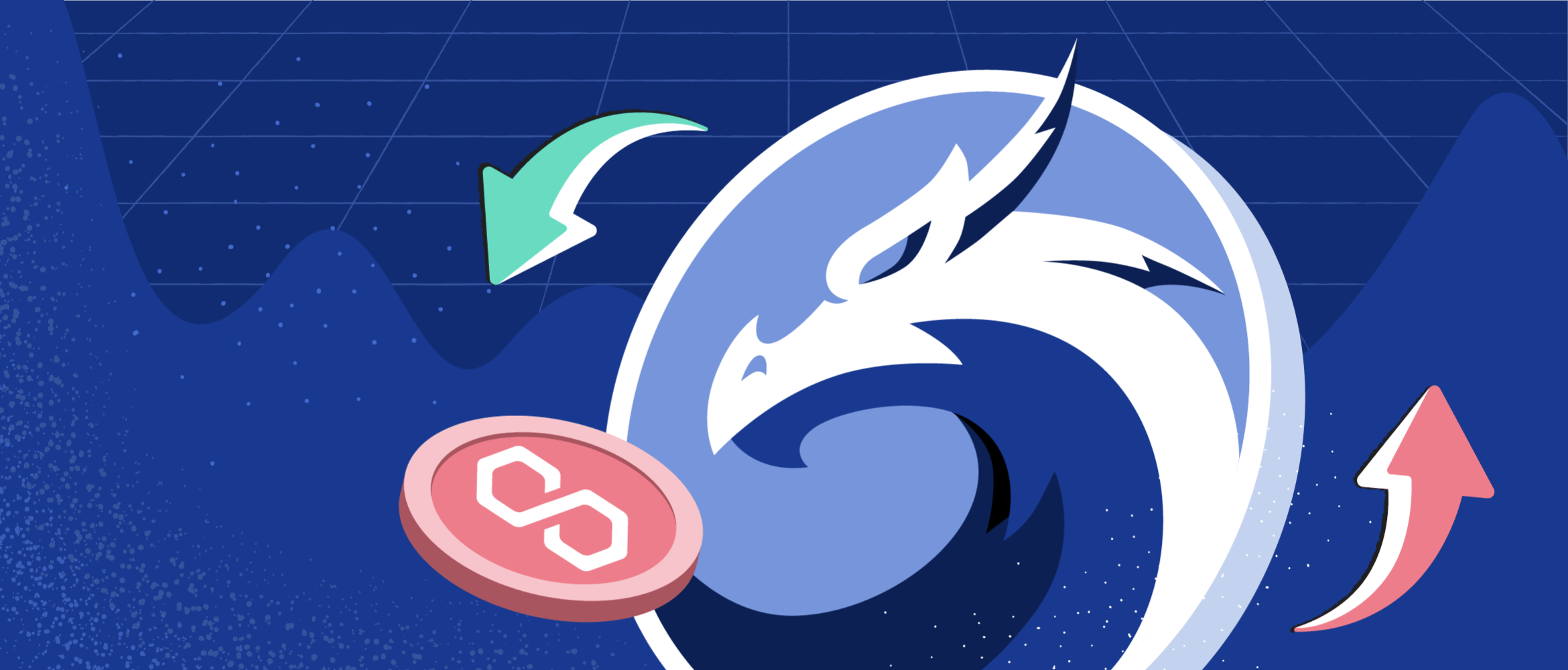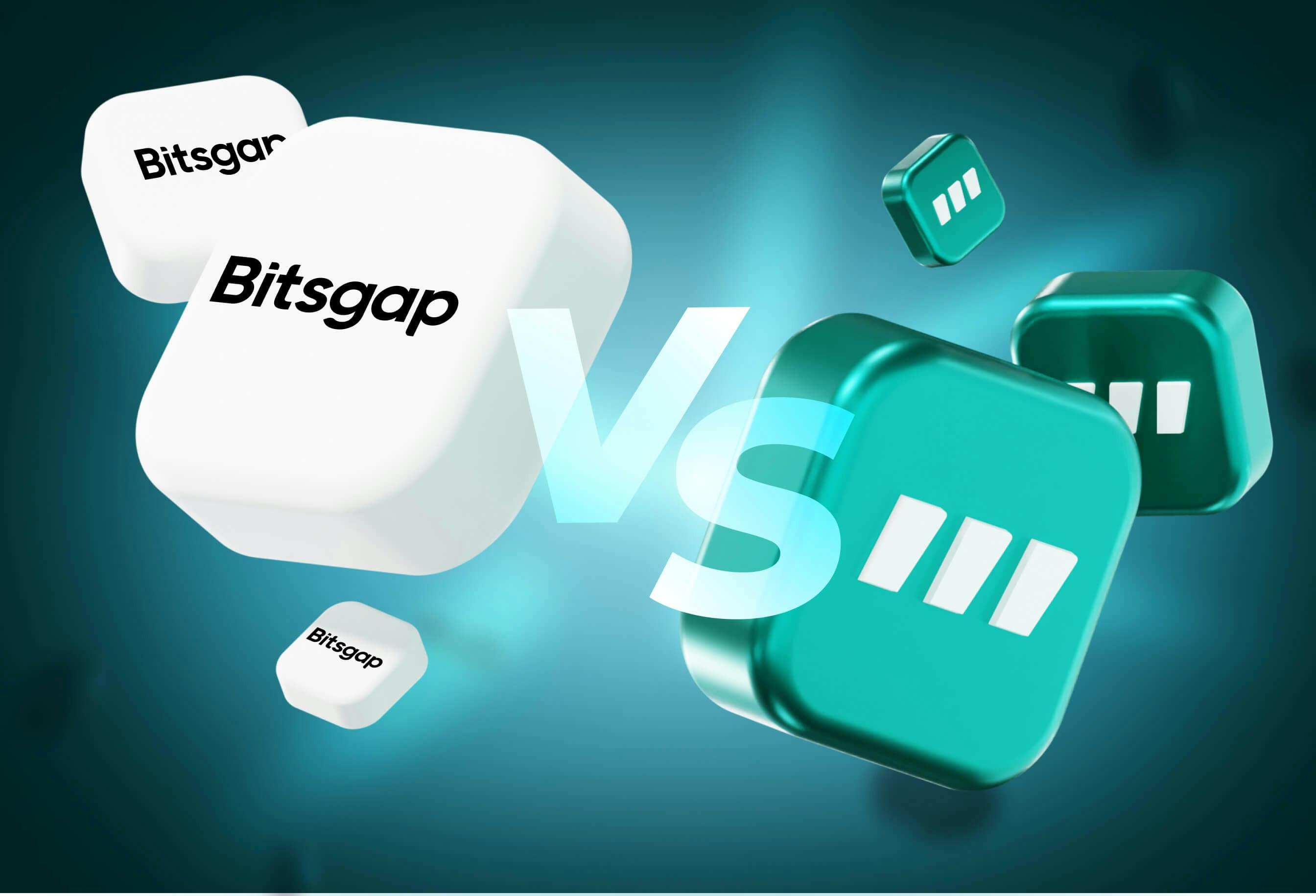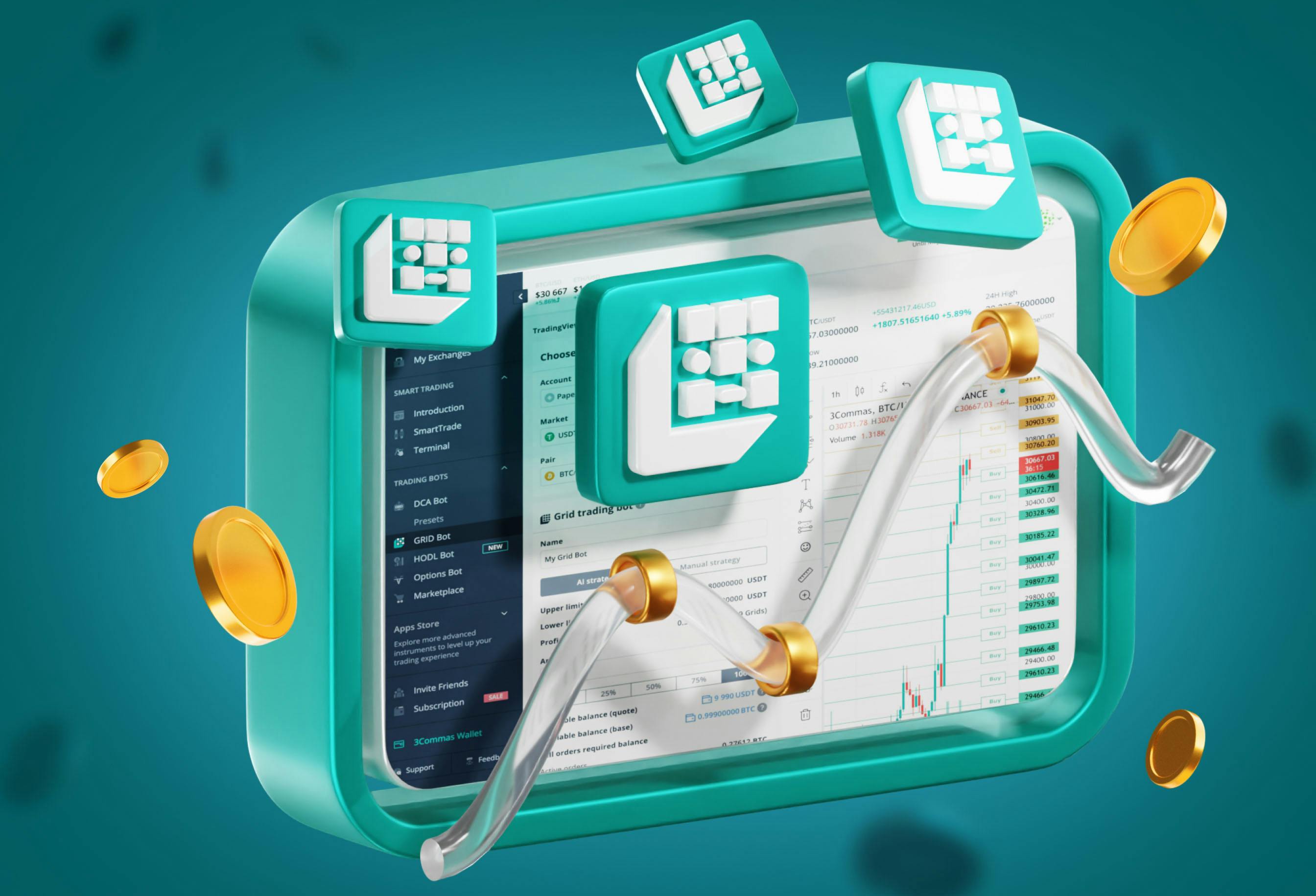
- All
- Tools
- Analytics
- Technical Analysis
- Trading
- Blockchain
- DeFi
- Guides
- Company News
- Educational
- Opinion
- Price Predictions
- Market News
- News
- Trading cases
- Practical guides
- Exchanges
- Trading signals
- Cryptocurrency
- Crypto bots
- Other
Become a crypto master
Learn everything about crypto,
trading and bots


What Is QuickSwap and How Does It Work?
QuickSwap is a decentralized exchange (DEX) based on the Polygon Network. The platform leverages a liquidity pool notion and the automated market-making model to let users earn transaction fees from token swaps.
Start Trading on 3Commas Today
Get full access to all 3Commas trading tools with free trial period

What Is QuickSwap?
QuickSwap is a decentralized exchange (DEX) based on Ethereum and supported by the Matic Network's Layer 2 scalability infrastructure. The platform uses an automated market maker (AMM) mechanism and liquidity pools to reward the community.
QuickSwap DEX operates on the Polygon network. It’s a Layer 2 blockchain based on Ethereum infrastructure. The main advantages of the network are fast transactions and minimal gas costs. Most ERC-20 tokens are available on the platform. You can use Polygon Bridge to transfer tokens to the Polygon network. QuickSwap currently supports more than 100 tokens for trading and about 200 liquidity pools. Additional incentives for providers are farming pools that allow earning on the Proof-of-Stake protocol, providing assets for lending at the same time. In total, users have access to more than 80 farming pools.
The QuickSwap protocol is regulated by a decentralized community, meaning that QUICK token holders can vote on different topics. For example, the community can vote on the commission or to change the reward distribution algorithm.
What is MATIC?
The Matic Network (MATIC) is a project that solves the scalability problems of the Ethereum blockchain. The Matic Network is a Layer 2 solution that scales by using sidechains for off-chain computing and secures assets using Plasma infrastructure and a decentralized network of Proof-of-Stake (PoS) validators.
Matic helps developers to deploy and run decentralized applications. The Matic Network project team has made significant contributions to the Ethereum ecosystem, working on implementing Plasma MVP (Minimum Viable Plasma), the WalletConnect protocol, and the popular Ethereum event alerting mechanism, Dagger. QuickSwap Matic collaboration is what stands the DEX out among its peer projects.
If you’re keen to learn more about Polygon (MATIC), we have included a step-by-step guide in our academy section.
How does QuickSwap work?
QuickSwap leaves the traditional digital exchange architecture far behind. The main reason for that is because there is no order book - the protocol works with the Constant Product Market Maker design, which is a variant of a model called Automated Market Maker (AMM).
Automated Market Makers are smart contracts that control liquidity pools allowing traders to trade as smoothly as possible. QuickSwap is a smart contract set that enables people to send buy/sell crypto orders. A smart contract is a special computer program based on the Ethereum blockchain. Smart contracts regulate and handle any token exchanges on QuickSwap automatically. Hence, any QuickSwap user can access swaps through a browser extension. There is no need to sign up or provide any ID information.
Another important feature is the liquidity pool concept. Liquidity providers fund the pools, allowing any project member to contribute the equivalent value of two tokens to the pool. Traders pay a small fee, distributed among liquidity providers according to the percentage of their shares in the pool.
QuickSwap liquidity pools
Quick liquidity providers create a market when they deposit the equivalent value of two tokens. Then, a smart contract automatically locks both assets — this can be ETH and an ERC-20 token or a pair of ERC-20 tokens.
You can read more about what ERC-20 tokens are in our academy.
Pools usually consist of stackable tokens such as DAI, USDC, or USDT, but this isn’t mandatory. In return, liquidity providers get so-called liquidity tokens (LP) that represent the share of the total liquidity pool. The more providers contribute — the better their rewards tend to be.
QuickSwap ETH/USDT liquidity pool
Let's have a look at a liquidity pool using ETH to USDT as an example. Imagine ETH part of the pool is "x," and the USDT part is "y.” QuickSwap multiplies both values to calculate the total liquidity in the pool. The final result is the k-factor. The basic idea behind QuickSwap is that "k" must remain constant, which means that the total liquidity in the pool is constant.
As a result, the formula is X * Y = K.
X is the first token, Y is the second token, and K is the pool’s constant.
How do QuickSwap transactions work?
Let's say Jack buys 1 ETH for 4,500 USDT using the ETH - USDT liquidity pool. By doing this, he increases the USDT share of the pool and decreases the share of the ETH pool.
Keeping in mind that the total liquidity (k) must remain constant, we can conclude that the ETH price will sky-rocket. As there is less ETH left in the pool after the transaction, the ETH price grows. The mechanism determines the price. Ultimately, the ETH price depends on how much this transaction changes the X/Y ratio.
The model doesn't scale linearly, meaning that larger orders become exponentially more expensive than smaller orders (less desirable slippage). Consequently, the larger the liquidity pool, the easier it is to handle high-cap orders. That's why if large investors play big, executing large-scaled trades, they use DEX aggregators, such as 1inch.
Read more about aggregators and the way they work here
QuickSwap fees
QuickSwap rewards any provider with specially-minted QUICK tokens. Based on the assets locked, contributors get proportional rewards, which means that the money is allocated based on each provider’s QUICK share. The incentive is a 0.25 percent fee per transaction. QUICK stacking enables the usage of dQUICK tokens, increasing the user's portion of the liquidity pool.
Exchange revenues are measured as a percentage of the total turnover of each pool. In other words, the commission you pay depends on transaction volume. The DEX collects a 0.3% transaction fee per swap.
QuickSwap features
QuickSwap includes the popular features of leading DEX but provides the missing critical components such as high-speed token transfers and nominal transaction fees.
Users providing liquidity for swaps on QuickSwap get a 0.25% commission and receive QuickSwap token for participation. QuickSwap DEX allows small-scaled traders to provide liquidity — even in tiny amounts. Naturally, anyone can earn passive income by providing liquidity.
The DEX offers any Polygon-related tokens as well as wrapped tokens. You can name a wrapped token if you spot the w prefix. For example, wrapped ETH is wETH. The same is true for wrapped BTC, which is WBTC. On top of mentioned coins, you can also swap USDC, DAI, and some other tokens.
Level 2 transactions
Transactions in QuickSwap are supported by Matic Network, a Plasma-based Ethereum Tier 2 scaling solution. This means that asset exchanges can be completed within ~2 seconds at a tiny fraction of the cost of gas on the underlying Ethereum circuit. Transactions on the Matic network are completed on the Ethereum main chain, providing all the security of Ethereum with huge layer 2 performance capabilities.
Non-custodial trading
Non-custodial means that you can trade directly from your crypto wallet. For example, you can swap some tokens using MetaMask, TrustWallet, WalletConnect, and many other wallets available on the platform. Unlike any centralized exchange (CEX), you don't have to deposit tokens into the exchange before trading. The crucial point here is that you're the only one to access your assets, which is fully protected during a swap.
Liquidity Mining
QuickSwap platform rewards liquidity providers with QUICK tokens. Such an approach encourages the community to lock more and more tokens within liquidity pools, resulting in favorable swap conditions. Distributed management is another feature QuickSwap users can enjoy.
Yield Farming
QuickSwap charges a 0.3% fee per transaction. Users who provide liquidity to trading pairs on the platform are entitled to receive a percentage of trading commissions proportional to their share of the liquidity pool.
Community Management
QuickSwap is a community-governed platform. QUICK token holders will own the QuickSwap management process. Holders can propose protocol changes and vote on factors such as pools eligible for FAST mining and more.
Price Impact
QuickSwap provides price impact warnings at the bottom of your trading dialog after you have selected your trading pair and the amount you are trading. This helpful header tells you the difference between the market price and the estimated transaction price. The size of your trade determines this difference. It also allows you to set a price exposure limit to cancel your trade / limit your losses if they are too high.
Quick Swap Coin
The decentralized autonomous organization (DAO) trend garnered much attention last year, and QuickSwap follows the common tendency. The protocol is governed by QUICK token holders, who can create proposals and vote on various factors related to the protocol's operation. Hence, the principal value of the token is the right to vote and decide upon significant decisions.
QuickSwap token price
When writing the article, QuickSwap price has consolidated around $410 per token for a while.
QuickSwap vs UniSwap
Not long ago, QuickSwap has branched out of the Uniswap platform. Uniswap is the largest decentralized Ethereum exchange and one of the largest decentralized financial app (DeFi) on Ethereum by total blocked value (TVL).
Why QuickSwap?
Uniswap has generated an incredible surge of enthusiasm and activity on Ethereum because it facilitates token trading. Its unpredictable nature also provides significant security benefits because you don't have to trust anyone with your tokens. However, because of Ethereum's high transaction fees ( gas fees), Uniswap’s use during periods of congestion has become prohibitively expensive.
The QuickSwap team's goal is to take advantage of the low commissions and fast confirmation time of Polygon Layer 2 technology, so they modified Uniswap (an open-source dApp) to work on Polygon and named the resulting project QuickSwap. Like Uniswap, QuickSwap has its own token called QUICK. QUICK can be purchased through QuickSwap exchanges using ETH or other tokens.
QuickSwap is also open source, which is beneficial because open source software provides a much higher degree of accountability and is more verifiable than proprietary software. This is important, given that QuickSwap handles user funds.
Bottom line
At the time of writing, QuickSwap’s overall trading volume stays within the top 20 DEX exchanges. Low commissions attract many users, which is especially relevant due to the Ethereum network сongestion. Transactions on QuickSwap can often cost less than on similar decentralized exchanges. On the other hand, Polygon features many ERC-20 tokens, which only adds more value to QuickSwap.
QuickSwap in 2025: Advancements and Strategic Developments
As of 2025, QuickSwap has reinforced its position as a decentralized exchange (DEX) that balances innovation, cross-chain operability, and enhanced user tools. Its ecosystem now aligns more closely with the automation needs of professional traders and the increasing adoption of crypto trading bots.
AI Integration with StratEx
QuickSwap’s integration of StratEx—an AI-driven DeFi platform—has introduced advanced automation capabilities that resonate with the growing use of crypto ai trading bots and crypto auto trade bots. These tools enhance portfolio decision-making, offering AI-assisted analysis for liquidity management and trade execution across volatile market conditions.
Multi-Chain Expansion and Automation Readiness
Originally anchored on the Polygon network, QuickSwap now supports trading on Polygon zkEVM and Dogechain, expanding access to new assets and liquidity pools. This multi-chain strategy enables better compatibility with crypto bot trading platforms and automated crypto trading bot tools that require scalable, low-fee environments to operate efficiently.
TVL Growth and Institutional Adoption
In Q1 2025, QuickSwap recorded a 72.5% increase in Total Value Locked (TVL), driven in part by the wider adoption of crypto bots trading strategies and the increasing number of institutions using cryptocurrency trading bots for real-time liquidity optimization. The platform’s growth underscores its ability to support high-frequency strategies powered by bots trading technology.
Cross-Chain Interoperability with Security Focus
Leveraging Polygon’s Agglayer and pessimistic proofs, QuickSwap has improved the security and efficiency of cross-chain transactions. These advancements are particularly relevant for firms deploying crypto trading bot software that rely on fast, secure multi-chain data synchronization to execute trades effectively.

A proven leader, successful at establishing operational excellence and building high-performance teams with a sharp focus on value creation and customer success.





